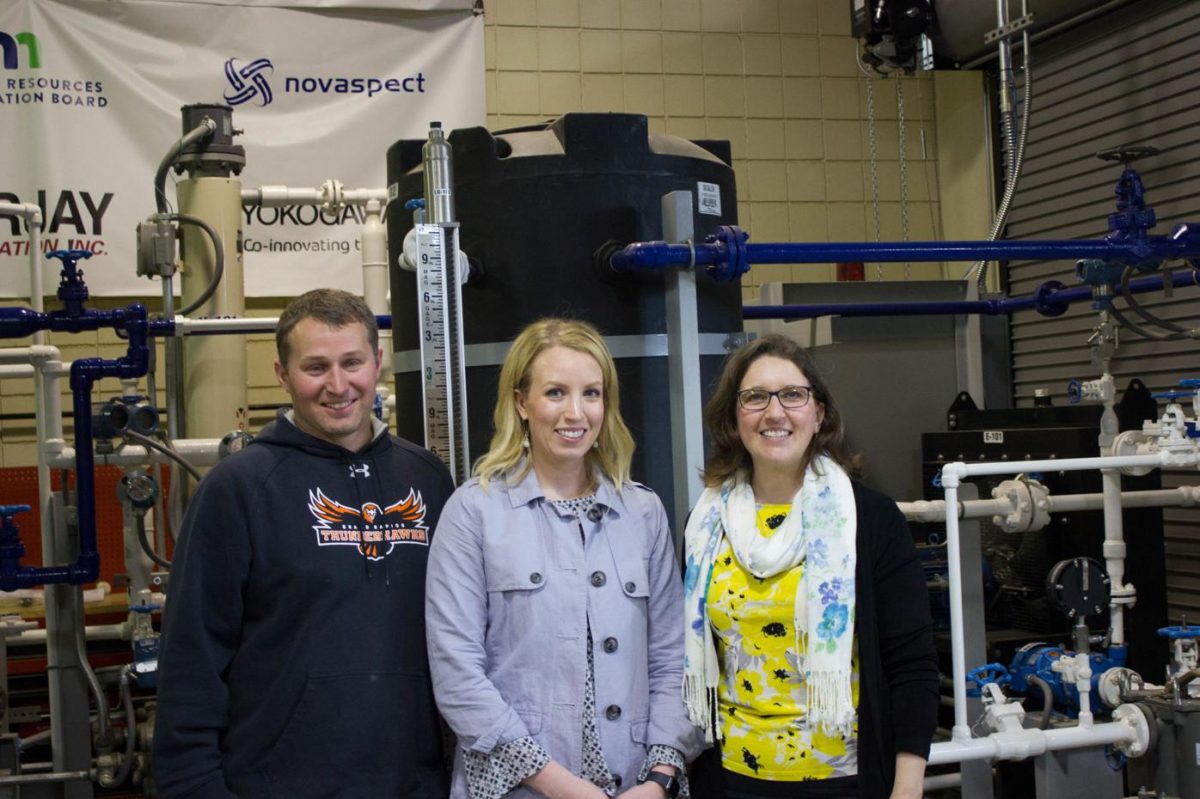Via Grand Rapids Herald Review
A report published by the Center for Rural Policy and Development (RCPD), “Finding work or finding workers? Part 4: Changing the story on careers in rural Minnesota,” focused a narrative often held by high school students that says they cannot find a career in their rural hometown communities. By diving into where this narrative begins, the report reveals ways to change this perception and overcome barriers to providing education about careers in these communities.
According to the report, written by Research Associate Kelly Asche and released in August 2019, organizations and employers in Minnesota are wondering why students leave rural areas after high school even when these areas show an increase in job opportunities.
Regional Workforce Strategy Consultant Jessica Miller with the Minnesota Department of Employment and Economic Development (DEED) stated, “Businesses and organizations have started to take notice of the high school narrative that [says] there are no opportunities for them in their region.”
Asche first looked at where this narrative is beginning. The “primary influencers” of high schoolers perceptions regarding career opportunities are their immediate family, formal advisors and experience. The report found if parents believe there is a lack of economic opportunity and value higher education, the student is more likely to move away. Additionally, formal advisors—such as college admission officials, teachers and guidance counselors—can impact how parents view opportunities for their children.
According to one study, “More employment possibilities, better pay and greater flexibility appeared to resonate strongly with parents, especially with rural parents of first-generation college-goers.”
The last influencer on high school students is hands-on experience where they can learn about careers in their area and opportunities that exist. Internships, get-to-know-you events and career expos, for example.
Here in Grand Rapids, the ISD 318 Career Pathways program is working to grow student interest in their future careers.
The program began in 2017 after receiving a grant from the Iron Range Resources and Rehabilitation Board (IRRRB). This grant helped to fund the development of the IASC Healthcare and Manufacturing Career Pathway in Grand Rapids High School, Greenway High School, Nashwauk-Keewatin High School and Itasca Community College.
“Career Pathways is a unique model that allows high school students to prepare for post-secondary opportunities in both college and in the workforce,” said Grand Rapids High School (GRHS) Principal Mark Schroeder.
Although communities want to share industry knowledge with local students, there are barriers to this quest. Asche described three of these barriers—transportation, shortage of instructors and state graduation requirements. The latter of these refers to the fact that many classes students can participate in to learn more about specific industries do not count toward graduation requirements.
Career Pathways has been able to address the issue of transportation through partnerships and online opportunities.
“The program partners high schools to increase opportunities for student course offerings through telepresence and allowing students to travel between districts to participate in programming,” a press release from IASC Career Pathways stated.
Asche’s report also examined the “Build Dakota Scholarship Program” from the state of South Dakota. The program provides students going to South Dakota technical schools a chance to graduate with no debt, provided they commit to living and working in South Dakota for three years following graduation. This program is available to in-state and out-state students with 10-25 of the 300 scholarships given each year having gone to Minnesota students.
“As we develop programs to expose more students to technical education and careers, we may end up losing those students to South Dakota for the free tuition,” Director of the Minnesota Valley Career and Technical Education Collaborative Druce Bergeson said. “State leaders need to know that not only are we having to recruit (heavily) our students into technical career paths in hopes of plugging the employee shortage, but we are also fighting a battle with other states who seem to be better armed at getting our students into their schools and committed to working in their state.”
Out of 700 tenth graders in southwest Minnesota, 70% said they would choose the career they wanted over living in the area they prefer, according to a study conducted by DEED. Furthermore, 74.2% believe they could find a career they wanted in the region. It seems the efforts of local organizations are starting to pay off as communities work to educate their students on the opportunities of their individual region.
“By offering these career pathways to youth in our area, IASC will become the student-centered workforce development movement of the region and a connection point for the whole community to use in addressing workforce and economic challenges,” explained Director of Career Pathways Claire Peterlin.
While there are barriers that may make the work difficult, programs such as Career Pathways is pushing forward to make sure students in the Grand Rapids area know what their options are right here in this region.
To read “Part 4: Changing the story on careers in rural Minnesota,” visit www.ruralmn.org.
